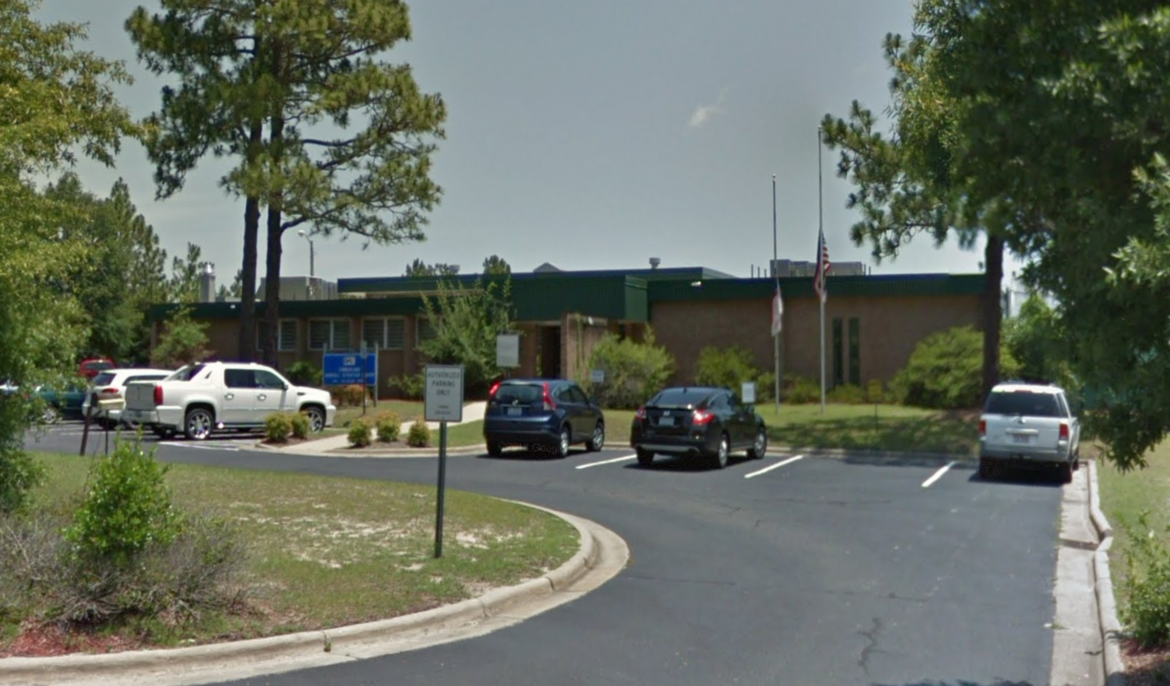As COVID-19 made shared transportation a potential enabler of disease transmission, it became clear that the introduction of videoconferencing equipment couldn’t have come at a more auspicious time for courthouses and juvenile detention centers across North Carolina.
Before the pandemic, youth were shuttled every 10 days from their rooms in state-run detention facilities to vans, from vans into county courthouses and back again, for regular continued custody hearings. Now that’s a potentially dangerous odyssey that could bring disease into a shared living space, and youth who are transported to court are supposed to be quarantined for 72 hours after returning to their secure facility.
 Instead, almost all regular custody hearings are now held over Microsoft Teams or Webex, where judges in courtrooms see young faces transmitted from secure facilities, rendered digitally inside a box on a computer screen.
Instead, almost all regular custody hearings are now held over Microsoft Teams or Webex, where judges in courtrooms see young faces transmitted from secure facilities, rendered digitally inside a box on a computer screen.
“The remote hearings have been incredible: the convenience, the safety,” said New Hanover County District Court Judge J.H. Corpening II in a virtual meeting of the North Carolina Juvenile Jurisdiction Advisory Committee on May 15. “We’re avoiding transporting juveniles. So I hope that you guys will take a look at continuing that after this is all done.”
As part of the state’s implementation of its raise the age law that began late last year, North Carolina introduced the videoconference systems into its 30 juvenile court districts plus its seven state-run juvenile detention centers, where youth are held preadjudication, and four youth development centers, where adjudicated youth are confined. Four county-run JDCs also have switched to videoconferencing for detention hearings, officials at those facilities said.
In all, juvenile transports are down 41% for the six weeks after the pandemic hit compared to the six-week period prior, said a spokesperson with the Department of Public Safety.
“Not going to court prevents our students from being housed with others in the courtroom holding area,” said Gene Hallock, director of the state-run Cumberland Juvenile Detention Center, in a statement. “The youth are expressing that their anxiety is even lower now, not having to go to the courthouse to possibly be exposed. They feel safe staying here and wearing their mask.”
Not everyone is without complaint about the new normal. Michelle Duprey is director of children’s defense for the Council for Children’s Rights, which defends youth accused of crimes in Charlotte’s Mecklenburg County. She said as her young clients appear before judges in court proceedings via videoconference, it robs them of some measure of their humanity.
“You see our client, but you’re seeing them sitting in a white-walled room in a detention facility with a mask on their face,” she said.
Still, judges in the county are doing what they can to ensure youths' rights are preserved, she said. They often encourage youth to confer with their lawyers in private, which usually means ducking out of the videoconference.
Systems will be used for telehealth in future
Duprey also said service providers sometimes do not show their faces on the videoconferences.
“We’re dealing with kids, and we’re dealing with situations where if you’re a person who’s appearing on the proceeding, you need to make sure your video is running,” she said. “Even if you are an ancillary member of that proceeding, it’s important.”
North Carolina’s Department of Public Safety says it plans to improve virtual hearings by swapping out the current laptop-based setups for dedicated videoconference systems. The more “immersive” Cisco systems are expected to be installed in each of the court buildings, state-run juvenile detention centers and youth development centers. Most juvenile detention centers will get a Cisco DX80 23-inch touchscreen model, said a DPS spokesperson said. Lenoir Youth Development Center in Kinston started using a new system April 21.
DPS says in the future the systems will be used for a telehealth program that will include psychiatric care.
In-person detention hearings stopped after March 26 in Mecklenburg County Court, which holds hearings for juveniles from the state-run Cabarrus Regional JDC and the county-run Mecklenburg County JDC, Duprey said. Since then every virtual detention hearing has been held, as required by law, every 10 days for each youth in custody while awaiting adjudication.
But facilities are still regularly sending youth to courthouses physically during the pandemic, mostly for proceedings besides the continued custody hearings and first appearances. Physical appearances are advised for probable cause hearings, adjudications and dispositions, according to a March 13 order from North Carolina Supreme Court Chief Justice Cheri Beasley.
Capt. Michelle Quintero, administrator for the county-run Madison County JDC, said two youths at the facility were transported to Buncombe County Courthouse on Thursday. One went for a secure custody hearing, and another was being transferred to a different facility after a hearing.
After youth are transported to courthouses in masks, they’re quarantined for at least 72 hours after changing clothes and washing their hands. That means further isolation during a time when physical visitation with family is suspended. The quarantine follows Centers for Disease Control and Prevention and state health department guidelines, said a spokesperson from DPS, which runs seven of the state’s 11 juvenile detention centers.
“If transportation staff can verify that youth were not exposed to individuals while out for appointment and they are symptom/fever free, the facility medical provider will evaluate and determine whether quarantine should be continued or discontinued,” said DPS spokesperson Diana Kees.
Quintero said so far, no youth from the county-run Madison County JDC have been quarantined on arrival back at the detention center.
“It all depends if they were masked the entire time and if the people around them were masked,” Quintero said. “If that’s the case, we’re good when they come back to go back to population.”
This story has been substantially updated.
